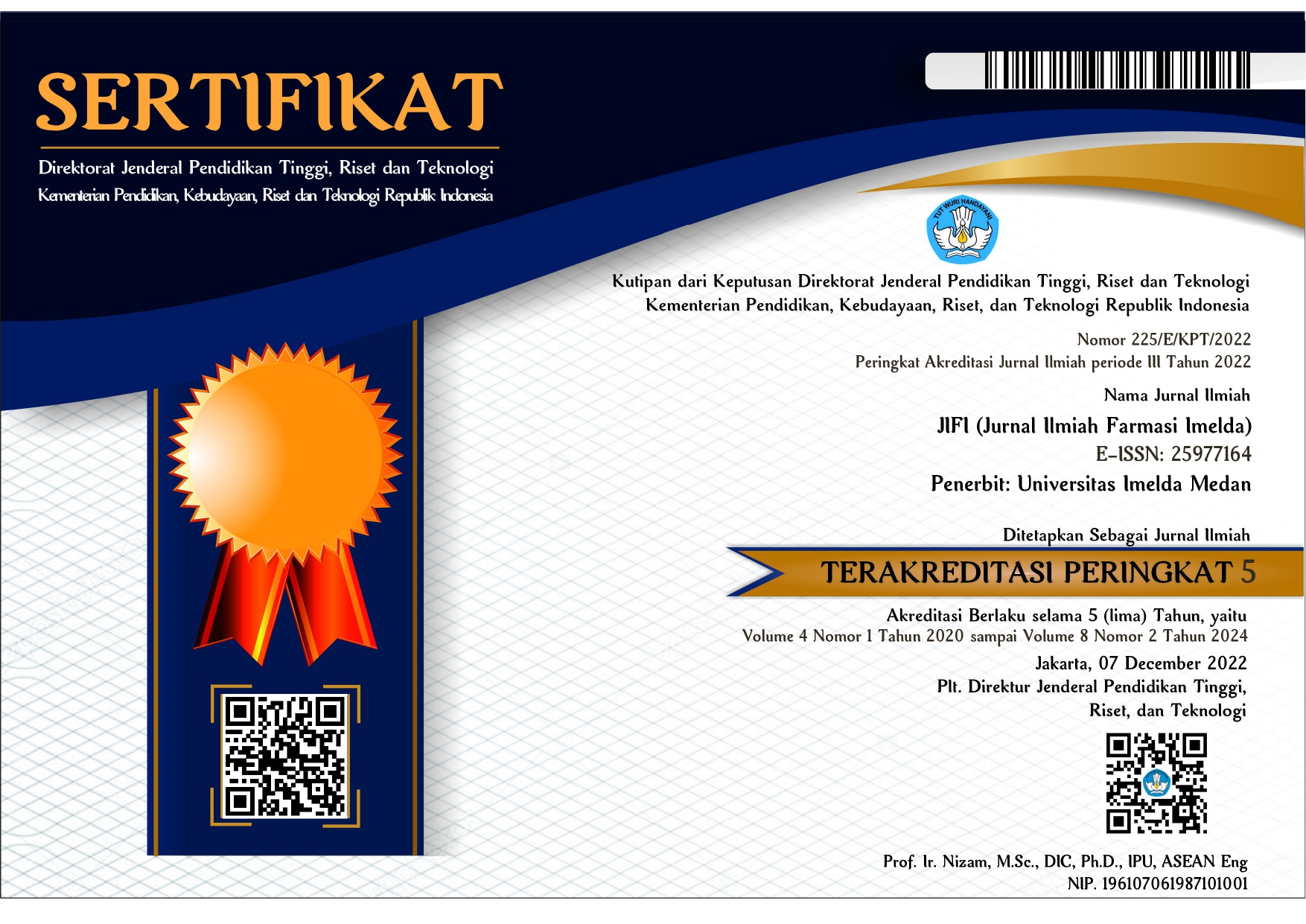KAJIAN ETNOBOTANI DAN BIOAKTIFITAS TUMBUHAN OBAT KABUPATEN TAPANULI UTARA
DOI:
https://doi.org/10.52943/jifarmasi.v5i1.618Keywords:
Ethnobotany, Use Value, Relative Frequency Of Citatin, Relative ImpotenceAbstract
Traditional medicinal plants have the potential for health maintenance and alternative medicine as well as increasing the competitiveness of the national economy because Indonesia is one of the countries rich in biodiversity. This research was conducted in March-June 2021 in Tapanuli Regency, North Sumatra, 3 different villages that are part of the Parmonangan sub-district, namely, Aekraja Village, Hutatinggi Village, Sisordak Village. The objectives to be achieved are to find out how to use medicinal plants. The research method used includes selecting respondents for traditional healers, ethnobotanical surveys including field surveys, interviews and sampling of medicinal plants and preparing herbarium specimens. The results obtained were then analyzed descriptively by calculating the index values ??of U, RFC and RI. Where the largest UV results are UV analysis, the Zingiber officinale value is found to have a value (the largest UV is 0.4), and the highest RFC use values ??include: Zingiber Offiicinale (RFC 0.4), and the highest Relative Impotance values ??include: Zingiber Offiicinale (RFC 0.67) then Based on the results of bioactivity observations; It can be seen that the use of Zingiber officinale contains glucan chemical and polygalacturonan with biactivity as an antitussive. This traditional utility is attempted to be linked to reports from previous scientific studies published electronically such as PubMed, Google Scholar, PubChem, and ScienceDirect
References
Setiawan, H., & Maryatul, Q. (2014). Kajian Etnobotani Masyarakat Adat Suku Moronene Di Taman Nasional Rawa Aopa Watumohai. Jurnal Penelitian Kehutanan Wallacea, 3(2), 107.https://doi.org/10.18330/jwallacea.2014.vol3iss2pp107-117.
Maulidiah, M., Winandari, O. P., & Saputri, D. A. (2020). PEMANFAATAN ORGAN TUMBUHAN SEBAGAI OBAT YANG DIOLAH SECARA TRADISIONAL DI KECAMATAN KEBUN TEBU KABUPATEN LAMPUNG BARAT. Jurnal Ilmu Kedokteran dan Kesehatan, 7(2), 443. https://doi.org/10.33024/JIKK.V7I2.2720
Anggraeni R. 2016. Studi etnobotani masyarakat subetnis Batak Toba di Desa Peadungdung, Sumatera Utara, Indonesia. Pro-Life. 3(2):129–142.
Hutagalung MR. 2016. Pemanfaatan tumbuhan obat pada masyarakat Suku Batak Toba di Kampung Pagaran Lambung Kabupaten Tapanuli Utara, Sumatera Utara [skripsi]. Bogor: Institut Pertanian Bogor.
Tardío, J., & Pardo De Santayana, M. (2008). Cultural importance indices: A comparative analysis based on the useful wild plants of southern Cantabria (northern Spain). Economic Botany, 62(1), 24–39. https://doi.org/10.1007/s12231-007-9004-5 .
Tchouya, G.R.F., Souza, A., Tchouankeu, J.C., Yala, J-F Boukandou d, M, Foundikou, H., Obiang, G.D.Ng., Boyom, F.F., Mabika, R.M., Menkem, E.Z., Ndinteh, D.T., and Lebibi, J. 2015. Ethnopharmacologycal surveys and pharmacological studies of plants used in traditional medicine in the treatment of HIV/AIDS opportunistic diseases in Gabon. Journal of Ethnopharmacology 162 (2015) 306-316.
Thomas, A.N.S,. 2012. Tanaman Obat Tradisional. Penerbit Kanisius. Yogyakarta.
van Steeins, C.G.G.J., 2003, Flora, diterjemahkan oleh Surjowinoto, PT. Pradnya Paramita, Jakarta.









